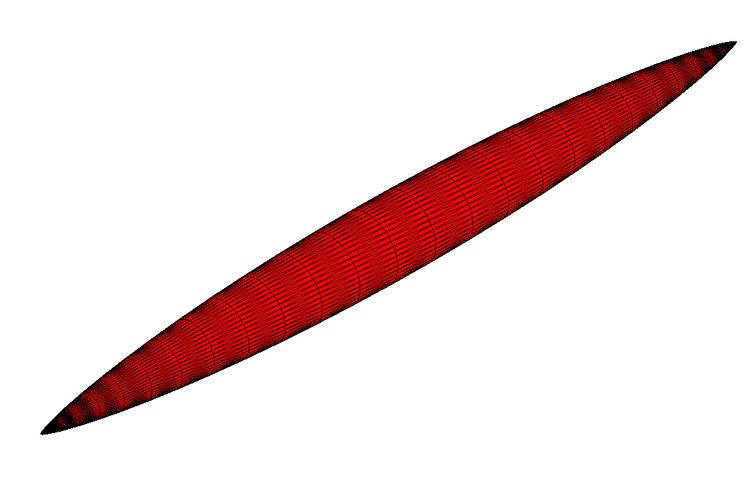 | ||
The Sears–Haack body is the shape with the lowest theoretical wave drag in supersonic flow, for a given body length and given volume. The mathematical derivation assumes small-disturbance (linearized) supersonic flow, which is governed by the Prandtl-Glauert equation. The derivation and shape were published independently by two separate researchers: Wolfgang Haack in 1941 and later by William Sears in 1947.
Contents
The theory indicates that the wave drag scales as the square of the second derivative of the area distribution,
Useful Formulas
The cross sectional area of a Sears–Haack Body is:
The volume of a Sears–Haack Body is:
The radius of a Sears–Haack Body is:
The derivative (slope) is:
The second derivative is:
where:
From Slender-body theory:
alternatively:
These formulae may be combined to get the following:
where:
Generalization by R.T Jones
The Sears–Haack body shape derivation is correct only in the limit of a slender body. The theory has been generalized to slender but non-axisymmetric shapes by Robert T. Jones NACA Report 1284. In this extension, the area
Area rule
A superficially related concept is the Whitcomb area rule, which states that wave drag due to volume in transonic flow depends primarily on the distribution of total cross-sectional area, and for low wave drag this distribution must be smooth. A common misconception is that the Sears–Haack body has the ideal area distribution according to the area rule, but this is not correct. The Prandtl-Glauert equation which is the starting point in the Sears–Haack body shape derivation is not valid in transonic flow, which is where the Area rule applies.
